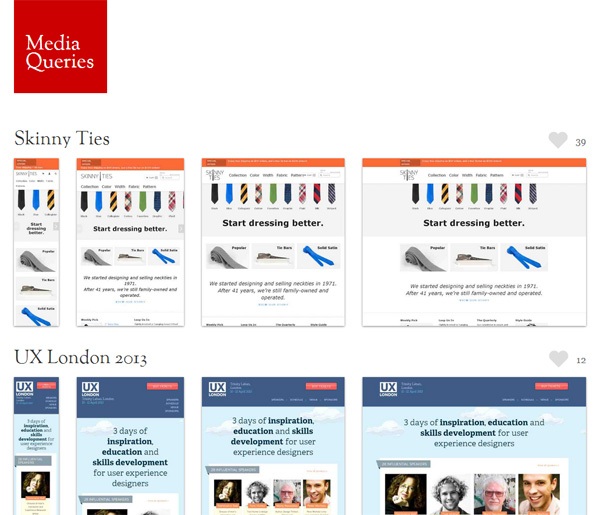- Home
- Blog
- Web Design
- What Is Responsive Web Design? (The Non-Developer’s Cheat Sheet)
What Is Responsive Web Design? (The Non-Developer’s Cheat Sheet)
-
 4 min. read
4 min. read
-
Summarize in ChatGPT
-
 Sarah Berry
Sarah Berry Lead Web Marketing Consultant
Lead Web Marketing Consultant
- Sarah Berry is a Lead Web Marketing Consultant at one of the largest digital marketing agencies in the USA — WebFX. With more than 10,000 hours of experience, she offers practical insights and strategies to grow your digital revenue. Her work has been cited by Michigan State University, Business Insider, and Ars Technica. When she isn’t polishing her Time Magazine Person of the Year Award, she’s spending time with her flock of ducks.
How can websites possibly keep up with the millions of screens out there? That would be through responsive web design or RWD design.
To define responsive web design means that your website (and its pages) can adapt and deliver the best experience to users, whether they’re on their desktop, laptop, tablet, or smartphone. For that to happen, though, your website needs a responsive design.
What is responsive web design, though, and how does it work?
Keep reading to find out, plus see real-life examples of responsive web designs!
If you’d like to stay-in-the-know about responsive website design, sign up for our exclusive newsletter, Revenue Weekly, to get web design and marketing tips for your business.
What is a responsive website?
Responsive web design, also called RWD design, describes a modern web design approach that allows websites and pages to render (or display) on all devices and screen sizes by automatically adapting to the screen, whether it’s a desktop, laptop, tablet, smartphone, or even a smart TV!
How does responsive web design work?
Responsive web design works through Cascading Style Sheets (CSS), using various settings to serve different style properties depending on the screen size, orientation, resolution, color capability, and other characteristics of the user’s device. A few examples of CSS properties related to responsive web design include the viewport and media queries.
Is my website responsive?
You can quickly see if a website is responsive or not in your web browser. 
- Open Google Chrome
- Go to your website
- Press Ctrl + Shift + I to open Chrome DevTools
- Press Ctrl + Shift + M to toggle the device toolbar
- View your page from a mobile, tablet, or desktop perspective
You can also use a free tool, like Google’s Mobile-Friendly Test, to see if pages on your website are mobile-friendly. While you can achieve mobile-friendliness with other design approaches, such as adaptive design, responsive web design is the most common because of its advantages.
Why responsive web design matters to web designers and business owners
Responsive web design relieves web designers, user interface designers, and web developers from working day and night creating websites for every single different device in existence. It also makes the lives of business owners, marketers, and advertisers easier.
Here are a few benefits:
- One site for every device: Whether viewed on a 27-inch iMac with a wireless connection or from the screen of your Android phone, the website will be configured for the user’s optimal viewing pleasure.
- Optimal design for the device: With the responsive web design approach, all images, fonts, and other HTML elements will be scaled appropriately, maximizing whatever screen size the user has.
- No need for redirects: Other options towards designing for multiple devices require the use of redirects to send the user to the appropriate version of a web page. Without the need for redirects, the user can access the content he wants to look at, as quickly as possible.
Responsive web design is also effective from a price standpoint. It’s also easier for you to manage because it’s one site versus two. You don’t have to make changes twice.
Instead, you can work from and update a single website.
Examples of responsive web design
 To see how responsive web design works, go ahead and access the Internet from your smartphone and browse through some sites listed on mediaqueri.es — an online gallery that features responsive web designs.
To see how responsive web design works, go ahead and access the Internet from your smartphone and browse through some sites listed on mediaqueri.es — an online gallery that features responsive web designs.
Now, look at the same sites on another Internet-enabled device like your laptop or your iPad. You can also use DevTools in Chrome. Notice how the pages alter their layouts to fit the device you’re on?
That’s responsive web design.
Learn more about responsive web design
Do you want to learn more about responsive web design? Check out these helpful resources:
- The 3 Elements of Responsive Web Design
- Why Responsive Web Design Is a Must
- 6 Tips for Making Your Website Responsive
- How Much Does Responsive Web Design and Development Cost?
If you’re looking for some professional assistance when it comes to making your website responsive, WebFX can help. We offer responsive web design and development services, with over 1,058 sites launched.
Discover some of our locations by city:
Call us at 888-601-5359 or contact us online to speak with a strategist about custom web design solutions!
-
 Sarah Berry is a Lead Web Marketing Consultant at one of the largest digital marketing agencies in the USA — WebFX. With more than 10,000 hours of experience, she offers practical insights and strategies to grow your digital revenue. Her work has been cited by Michigan State University, Business Insider, and Ars Technica. When she isn’t polishing her Time Magazine Person of the Year Award, she’s spending time with her flock of ducks.
Sarah Berry is a Lead Web Marketing Consultant at one of the largest digital marketing agencies in the USA — WebFX. With more than 10,000 hours of experience, she offers practical insights and strategies to grow your digital revenue. Her work has been cited by Michigan State University, Business Insider, and Ars Technica. When she isn’t polishing her Time Magazine Person of the Year Award, she’s spending time with her flock of ducks. -

WebFX is a full-service marketing agency with 1,100+ client reviews and a 4.9-star rating on Clutch! Find out how our expert team and revenue-accelerating tech can drive results for you! Learn more
Make estimating web design costs easy
Website design costs can be tricky to nail down. Get an instant estimate for a custom web design with our free website design cost calculator!
Try Our Free Web Design Cost Calculator


Web Design Calculator
Use our free tool to get a free, instant quote in under 60 seconds.
View Web Design Calculator
Proven Marketing Strategies
Make estimating web design costs easy
Website design costs can be tricky to nail down. Get an instant estimate for a custom web design with our free website design cost calculator!
Try Our Free Web Design Cost Calculator
What to read next




